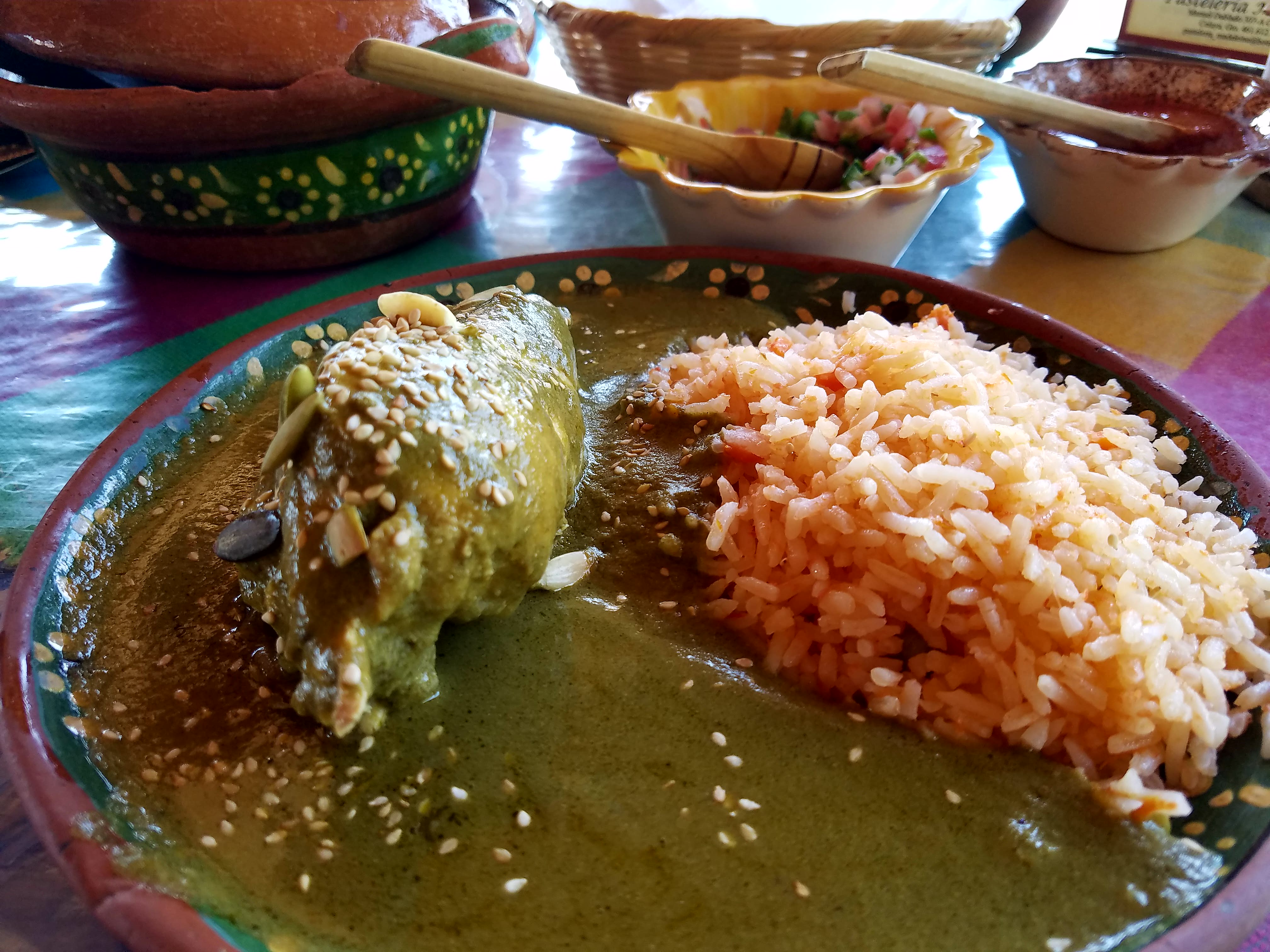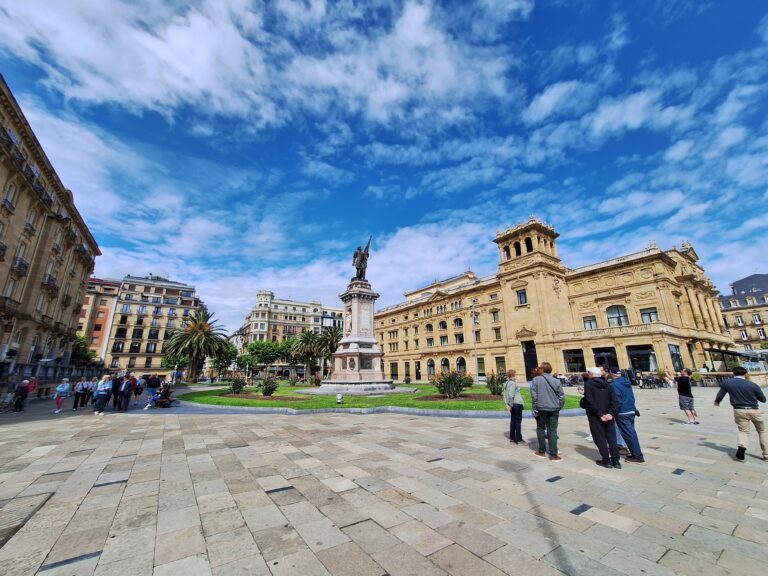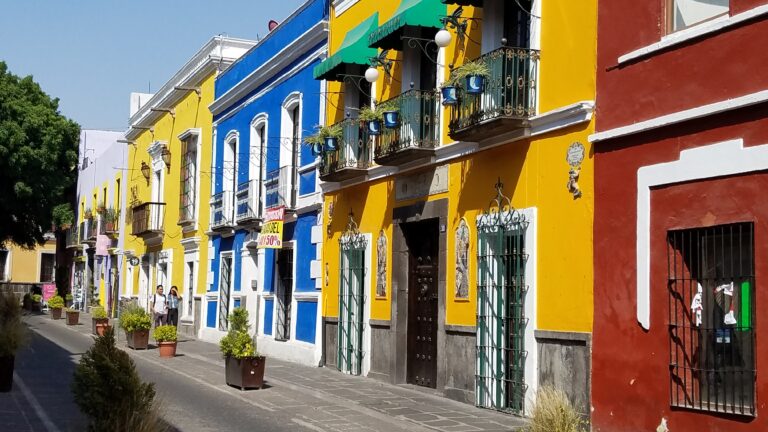The Complexity of Mole- Real Mexican Cuisine
The most commonly found Mexican cuisine in America is usually Tex-Mex; the heavy rice, beans and cheese dishes that fill you up but offer little complexity and elegance. Living in the heart of Mexico, we have been exploring real Mexican cuisine. Mole is considered Mexico’s national dish, but as we have found, each region has its own mole specialty. Our exposure to mole has been limited to the young and aged moles Restaurant Pujol in Mexico City, so we wanted to learn a little more about this unique sauce.
What is Mole?
Mole comes from the Nahautl word molli which means “sauce” or “mix”. Mole translated from Spanish means “mass”. It’s a complex sauce made from a mass of chilis and a variety of other ingredients. Mole is usually poured over chicken, turkey, fish and vegetables, but not served by itself. The subtle flavors of these meats and veggies allows the unique flavors of the mole to be the star attraction.
The indigenous people of Mexico have been making mole since before the Spanish arrived, but the recipes were not written down until after the War of Independence in 1810. Today it is a mixture of ingredients from North America, Europe, Asia and Africa, making it the first international dish created in the Americas.
Creating Mole
Creating mole is very labor intensive. It is usually reserved for big events or gatherings like weddings and holidays. The ingredients are roasted and ground into a powder or paste, then simmered in water or broth until thick. This mixture has to be stirred continuously to prevent burning. Mole verde made with fresh herbs doesn’t take as long to make, but some can take a whole day or two to acquire the right taste and thickness.
Varieties of Mole
Many variations of mole based on region, availability of ingredients and heritage can be found throughout Mexico. The state of Oaxaca is known as “the land of the seven moles” for their mole negro, colorado, amarillo, verde, chichilo, coloradito, and mancha manteles (or tablecloth stainer). All have a distinct flavor and color based on the chilis and herbs used.
Mole can be the color of black, red, yellow, green or other variations, and it contains chilis, fruits, nuts, spices and thickeners lile tortillas. The list of ingredients can include tomatillos, onions, garlic, cumin, fresh herbs, pumpkin seeds, almonds and peanuts just to name a few. Mole poblano which has an average of 20 ingredients including chocolate which is added to the mole at the end of preparation. Mole almendrado has an average of 26 ingredients, and Oaxacan moles can have over 30 ingredients.
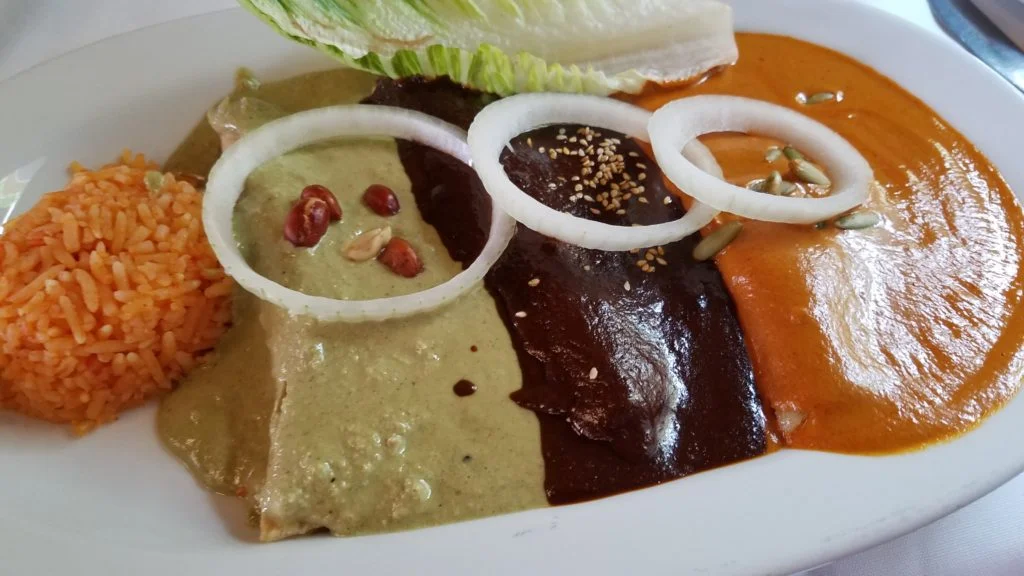
Towns Famous for Their Mole
San Pedro Atocpan, a small town on the outskirts of Mexico City, produces 60% of the moles consumed in Mexico. Ninety-two percent of the town’s population makes a living preparing mole powders and pastes. A number of moles are made in the town, but mole almendrado (mole with almonds) is their signature mole.
Other areas of Mexico have their own signature mole. Oaxaca and Puebla both claim to be the birthplace of moles. Puebla is famous for its Mole Poblano made with chocolate. The southeast is known for their mole amarillito, the Valley of Mexico for mole coloradito, Tlaxcala for mole prieto and Morelos for mole ranchero. Taxco has a pink version called mole rosa.
Check out the best place it have mole poblano in Puebla in our post: 10 Dishes You Have to Try in Puebla (and the Best Restaurants to Try Them)
Interesting fact:
Mole negro is the most complex and difficult to make of the sauces. It includes chocolate, as well as chili peppers, onions, garlic and many spices, but what makes it distinct is the addition of a herb called hoja santa.
The House of Mole
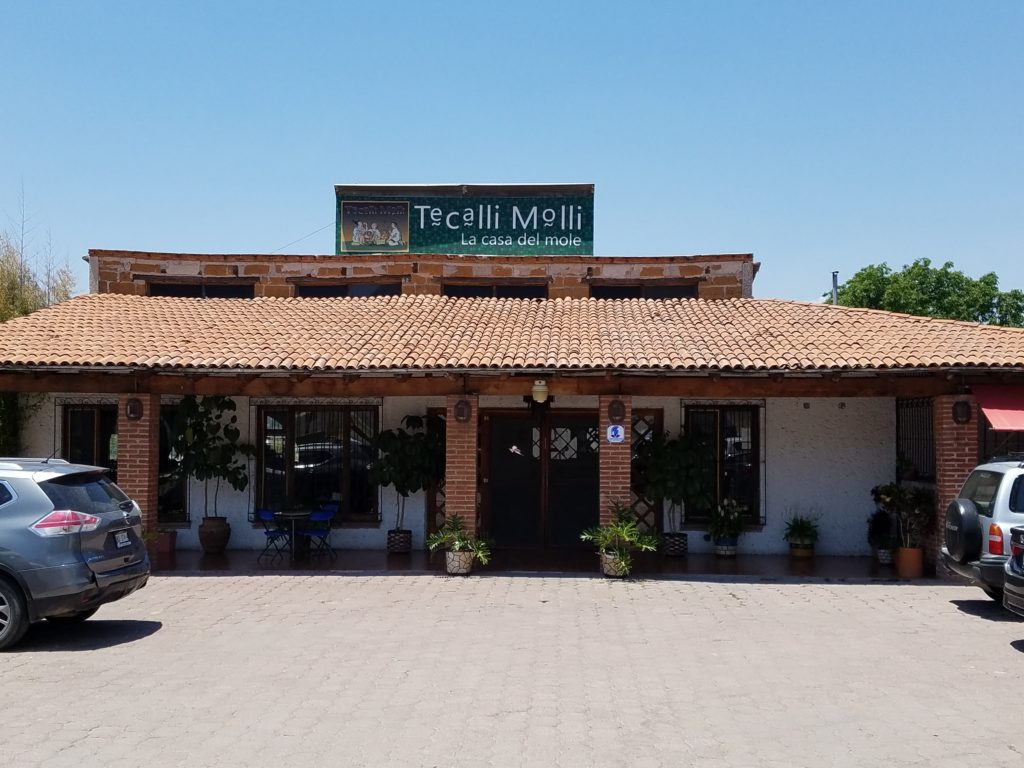
We discovered a little place on the side of the highway not far from our house that specializes in mole; Tecalli Molli- La Casa del Mole. This cute little restaurant oozing with Mexican charm overlooks a reservoir on the way to San Miguel de Allende. Chickens run free out back, and the serenity of the place puts you at peace. Carved wooden chairs sidle up to big wooden tables. Chips, salsa verde, salsa rojo and pickled vegetables make a nice edible centerpiece on the tables.
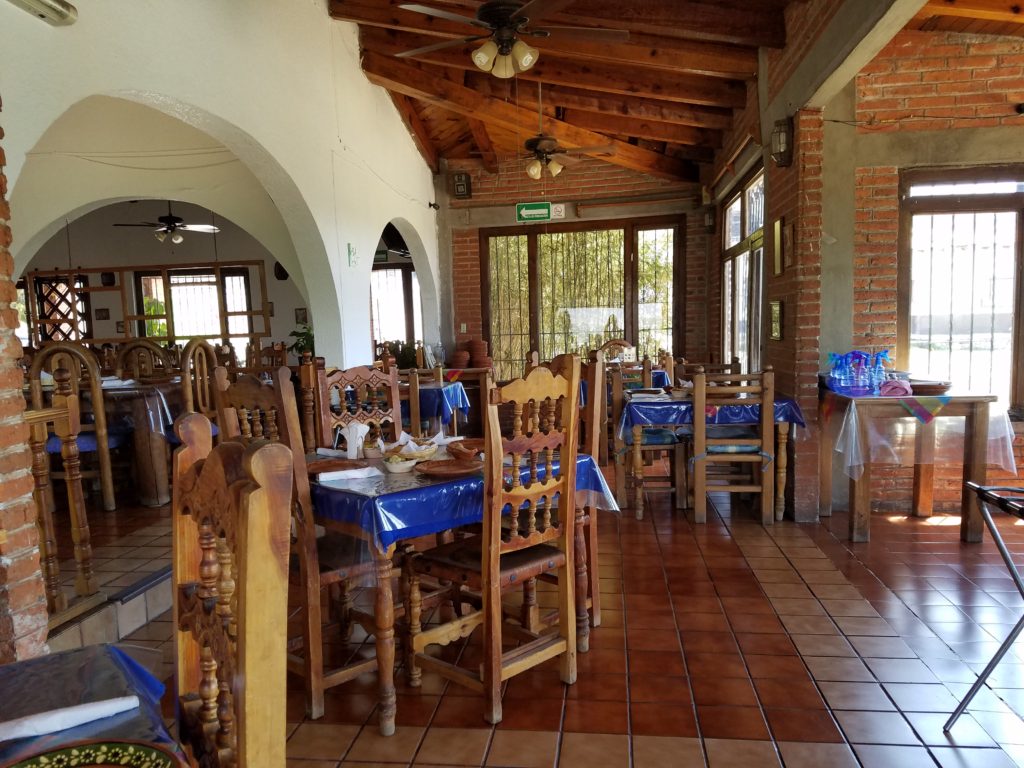
From the menu, we chose a classic mole verde and the mole almendrado, a mole sauce using almonds as a base. Both were spectacular with chicken. The mole almendrado was smoother and lighter in taste, while the mole verde, made with fresh herbs, had more of a bitter taste like you would find with kale or arugula. Rice and black beans accompanied the meal. The chicken was succulent and loaded with real chicken flavor, and it is beyond doubt that the free range birds scratching around in the bushes out back were what we were enjoying.
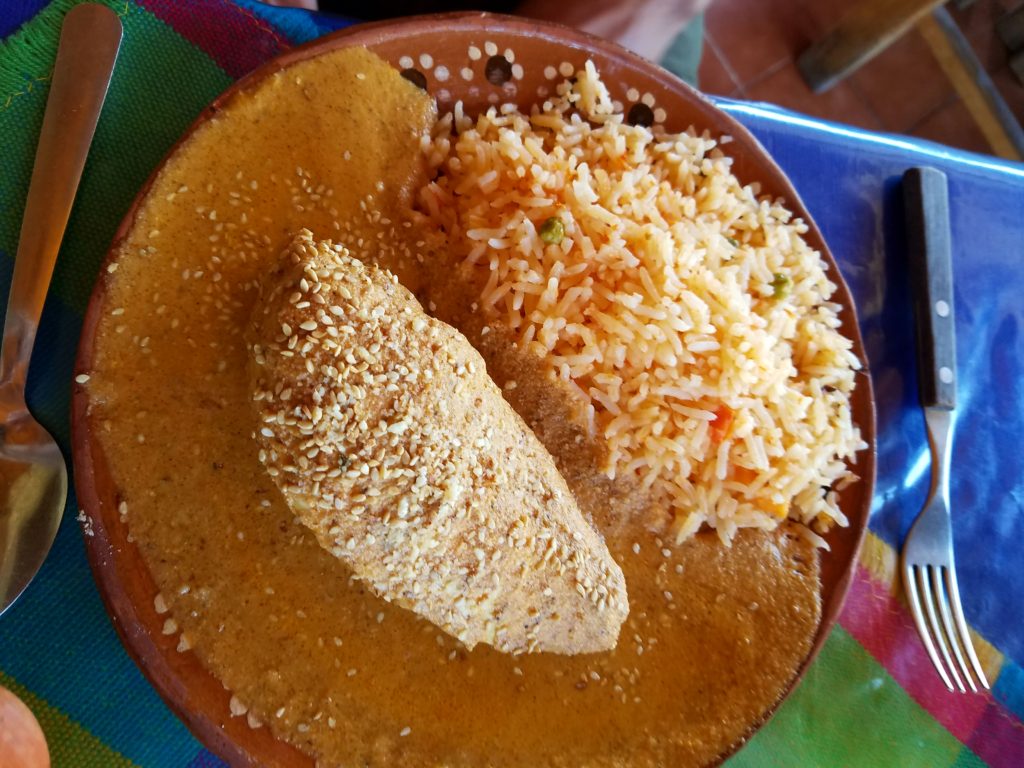
Mole in Latin America
Mole may be considered Mexico’s national dish, but it is found throughout Latin America. In Guatemala, mole is a dessert sauce made from chocolate, dried chilis, tomatoes and pumpkin seeds. It is often poured over fried plantains and is served with sesame seeds on top.
If you are traveling through Mexico, check to see if there is a mole festival happening near you. The people are proud of their moles, and you probably won’t have the same one twice as everyone has their own recipe.
So now you know more about moles. We can’t wait to go back and try some of the other mole dishes on the menu. It’s our own international house of mole!
[wp_ad_camp_1]

